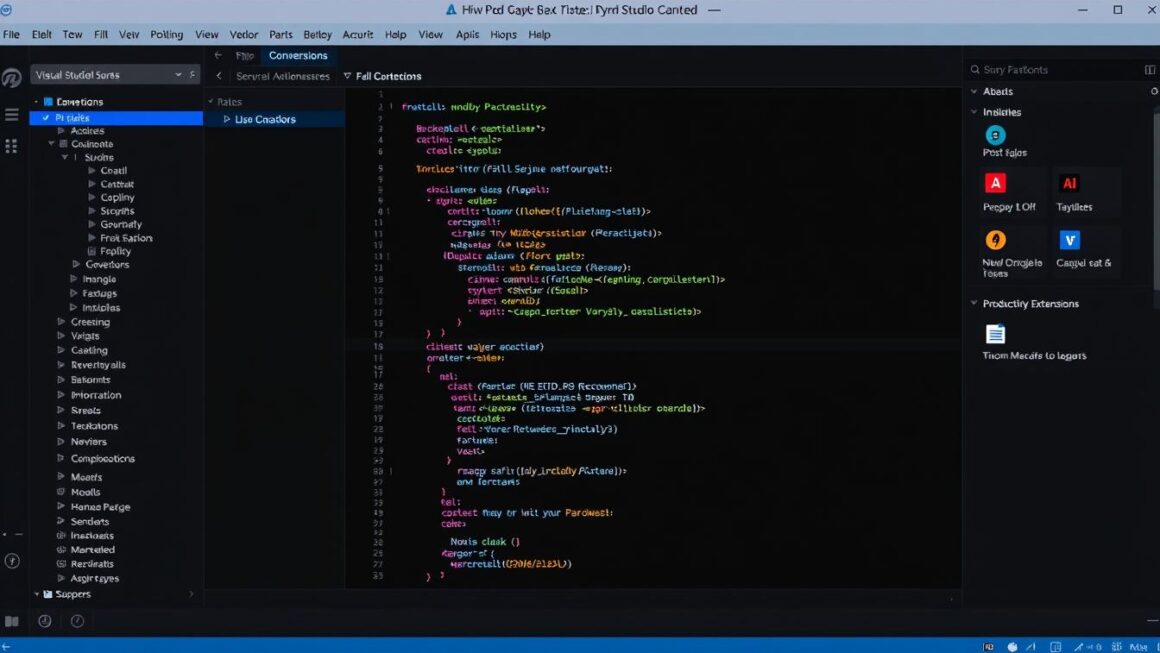The smartphone industry has witnessed a significant transformation with the advent of foldable phones, revolutionizing the way we interact with our devices. These innovative phones offer users the versatility of a compact smartphone that can unfold into a larger, tablet-sized screen, enhancing multitasking and media consumption.
As a tech enthusiast, I’ve observed the remarkable evolution of foldable smartphones over the years. What was once considered a gimmick has now become a mainstream phenomenon, with multiple manufacturers releasing refined models that address earlier limitations in durability, usability, and features.
The expanding range of phones available in the market presents consumers with more choices, but also creates complexity in identifying the best device for specific needs. This article will examine the evolution of foldable technology, assess current market leaders, and explore the future of smartphones and their design.
Key Takeaways
- The rise of foldable phones is transforming the smartphone industry.
- Foldable smartphones offer enhanced multitasking and media consumption.
- Multiple manufacturers are releasing refined foldable models.
- The market is expanding, presenting consumers with more choices.
- The future of smartphones is closely tied to advancements in foldable technology.
The Evolution of Foldable Technology
Foldable technology has undergone a remarkable transformation, revolutionizing mobile design. The journey of foldable phones began with concept designs and prototypes that captured the public’s imagination but faced significant technical hurdles in practical implementation.
Initially, early attempts at folding technology struggled with durability issues, visible creases, and prohibitive costs that limited their appeal to mainstream consumers. However, significant advancements have been made, driven by brands like Samsung, Huawei, and Motorola, which are pushing boundaries with flexible OLED technology and hinge engineering.
Advancements in Design
The breakthrough came with advances in flexible OLED display technology, allowing screens to bend repeatedly without degradation in image quality or structural integrity. This technological leap enabled the creation of more durable and aesthetically pleasing phones.
- The development of flexible OLED displays was a crucial step forward.
- Innovations in hinge engineering have balanced durability with elegant operation.
Technological Breakthroughs
Hinge engineering emerged as a critical component, with companies like Samsung, Motorola, and Huawei developing increasingly sophisticated mechanisms. The evolution from concept to commercial reality required solving complex challenges in materials science, manufacturing processes, and software optimization to create devices that could withstand daily use.
While foldable phones might have started as something of a gimmick, they have shot up in quality over recent years. Samsung is probably the most well-known phone maker when it comes to foldable technology, and it knows what it is doing.
How Foldable Phones Are Reshaping Mobile Design
Foldable phones are redefining the mobile landscape, pushing the boundaries of innovation and practicality. These devices are not just altering the way we interact with our phones; they are also influencing the very design of mobile technology.
Merging Innovation with Practicality
The dual-nature of foldable phones—functioning as both standard smartphones and expandable tablets—has necessitated a rethink of mobile device design. Manufacturers are challenged to balance innovation with everyday usability. Foldable phones have fundamentally altered the approach to mobile device design, enabling users to enjoy a larger screen experience without compromising portability.
For instance, when unfolded, these devices offer a larger screen real estate, ideal for multitasking, watching videos, or browsing the web. When folded, they fit neatly into pockets, maintaining the convenience of a traditional phone.
| Feature | Traditional Smartphones | Foldable Phones |
|---|---|---|
| Screen Size | Typically up to 6.8 inches | Expandable up to 8 inches or more |
| Portability | Compact and pocket-friendly | Folds to fit into pockets |
| Multitasking | Limited multitasking capabilities | Enhanced multitasking with larger screens |
Impact on User Interface Design
Foldable phones are also influencing user interface (UI) design, prompting developers to create adaptive apps that smoothly transition across different screen sizes. The impact extends beyond hardware, influencing operating system design with new multitasking capabilities, split-screen functionalities, and gesture controls optimized for larger displays.
Software developers are now focused on creating applications that can intelligently respond to changing screen configurations, providing seamless transitions between folded and unfolded states. This adaptability is setting new standards for mobile device versatility, allowing users to adapt their device to different contexts and needs throughout the day.
Top Foldable Phones in 2025
As we navigate the 2025 foldable phone landscape, it’s clear that there’s no one-size-fits-all solution. The market now offers a diverse range of devices across different form factors, price points, and specializations.
Selection Criteria
To effectively navigate the diverse foldable phones available, clear selection criteria are essential. Our evaluation methodology prioritizes real-world usability, build quality, display technology, performance metrics, camera capabilities, battery life, and software optimization specifically for foldable form factors.
- Real-world usability and build quality are crucial for a seamless user experience.
- Display technology and performance metrics significantly impact the overall phone performance.
- Camera capabilities and battery life are key factors in determining the best foldable phone models.
Categories Explained
We’ve categorized foldable phones based on their design approach into book-style devices that open horizontally and flip-style phones that fold vertically. Additional classification factors include price range (premium, mid-range, budget), specialized strengths (camera quality, display technology, battery performance), and target user profiles (productivity-focused, media consumption, compact design).
- Book-style devices offer larger displays, ideal for productivity and media consumption.
- Flip-style phones provide compact designs, perfect for users seeking convenience.
- Different price ranges cater to various user budgets and preferences.
OnePlus Open: Best Overall Foldable Phone

OnePlus has made a significant impact with its first foldable phone, the OnePlus Open, setting a high bar for future devices. As our best overall foldable, there is a lot to love about this device, which we hope to see recreated in the OnePlus Open2.
Design and Display
The OnePlus Open boasts an impressive display configuration, featuring a 7.8-inch main screen with a resolution of 2440 x 2268 and a 6.3-inch secondary screen with a resolution of 2484 x 1116. This setup provides an ideal balance, feeling natural in both folded and unfolded states.
Performance and Features
Under the hood, the OnePlus Open is powered by the Snapdragon 8 Gen 2 processor, paired with 16GB of RAM and 512GB of storage. This configuration ensures that the device handles multitasking and demanding applications with ease, showcasing its robust performance and comprehensive features.
Camera Capabilities
The camera system on the OnePlus Open delivers impressive results across various shooting conditions. It particularly excels in portrait photography and color accuracy, rivaling traditional flagship phones.
Battery Life and Charging
The OnePlus Open features a 4,805mAh battery that provides all-day usage, even with the larger display. Additionally, it supports fast charging, which helps offset the absence of wireless charging.
Samsung Galaxy Z Fold 6: Most Feature-Rich Foldable
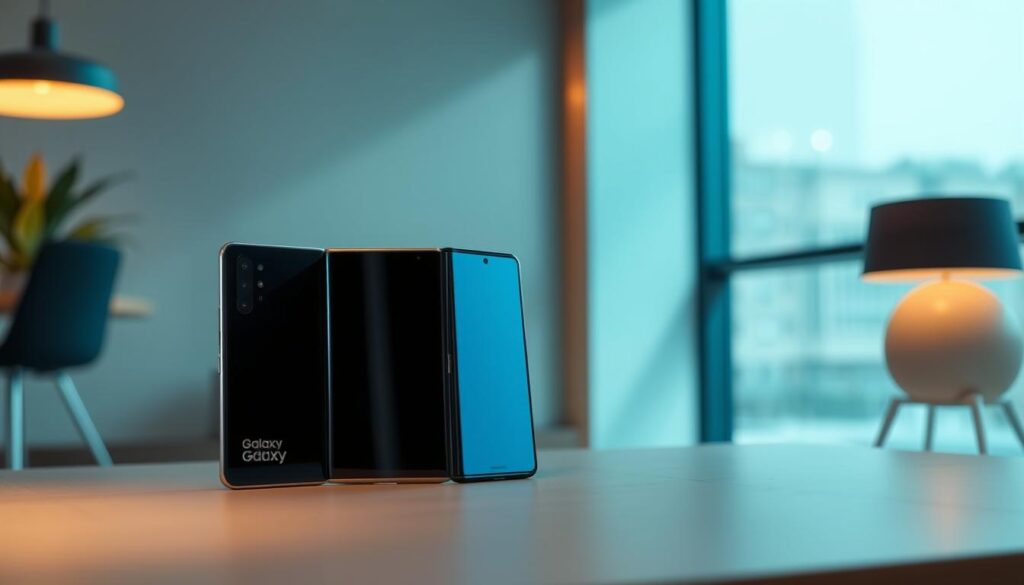
With its cutting-edge features and refined design, the Samsung Galaxy Z Fold6 stands out as a leader in the foldable phone segment. This device is a testament to Samsung’s extensive experience in the foldable market, offering the most comprehensive feature set available in a book-style foldable device.
Design and Build Quality
The Galaxy Z Fold6 boasts a refined design that addresses previous criticisms with a thinner, lighter form factor. Measuring 6 x 5.2 x 0.22 inches when opened and 6 x 2.7 x 0.48 inches when closed, it improves portability while maintaining the premium feel expected from Samsung’s flagship devices. The design enhancements make it a significant improvement over its predecessors.
Galaxy AI Features
The implementation of Galaxy AI features sets the Z Fold6 apart, with intelligent functionalities optimized specifically for the foldable form factor. Enhanced multitasking capabilities and creative tools like Sketch To Image transform simple drawings into detailed artwork, showcasing the device’s innovative features.
Camera System
Despite using similar hardware to previous generations, the camera system on the Galaxy Z Fold6 shows noticeable improvements in image processing and low-light performance. Leveraging computational photography advances, it delivers consistently high-quality results, making it a reliable choice for photography enthusiasts.
Performance and Battery
The combination of the Snapdragon 8 Gen 3 processor with Samsung’s software optimization delivers exceptional performance for productivity applications. The battery life is also optimized to support the device’s advanced features, making the Z Fold6 particularly well-suited for business users seeking a device that can potentially replace a laptop for many tasks.
The Samsung Galaxy Z Fold6 is a significant step forward in the foldable phone market, offering a compelling blend of features, design, and performance. As a leading Samsung Galaxy Fold device, it sets a new standard for the industry.
Google Pixel 9 Pro Fold: Best Display in a Foldable
![]()
With its stunning 8-inch screen, the Google Pixel 9 Pro Fold is redefining the foldable phone experience. This device stands out not just for its display but also for its comprehensive suite of features that enhance user experience.
Screen Technology and Brightness
The Google Pixel 9 Pro Fold boasts an exceptional screen that achieves brightness levels of up to 2,319 nits, making it one of the brightest foldable phones available. This is a significant improvement over previous models and competitors, ensuring a superior viewing experience.
AI Integration
Google’s implementation of AI features in the Pixel 9 Pro Fold is deeply integrated with the hardware, offering intelligent photography enhancements, contextual computing, and productivity tools that effectively leverage the larger display area. This integration significantly enhances the overall user experience.
Camera Performance
The camera system on the Pixel 9 Pro Fold benefits from Google’s computational photography expertise, producing consistently excellent results across various lighting conditions. While it may not have the highest hardware specifications, the camera delivers impressive performance.
Battery and Performance
The Pixel 9 Pro Fold is powered by the Tensor G4 processor, which delivers a smooth and responsive experience optimized for Google’s software ecosystem and AI capabilities. The device also offers over 11 hours of continuous use, making it reliable for daily tasks.
The Google Pixel 9 Pro Fold is a testament to Google’s innovation in the phone industry, particularly in the foldable phone segment. With its exceptional screen, advanced AI features, and reliable performance, it stands out as a top choice for those seeking a premium foldable device.
Flip-Style Foldable Phones: Compact Innovation
Flip-style foldable phones offer a unique blend of nostalgia and innovation, making them a compelling choice for many users. These devices represent a distinct approach to foldable technology, prioritizing extreme portability and nostalgic appeal through a vertical folding mechanism that creates a compact square when closed.
The Appeal of Clamshell Design
The clamshell design of flip-style foldables addresses different user priorities than book-style foldables. It appeals to those who value pocket-friendliness and the satisfying tactile experience of physically closing a phone to end calls or disconnect from digital distractions. The compact size of these devices when closed makes them easy to carry around, fitting neatly into a pocket or purse.
Many flip-style foldables feature functional external displays, allowing users to check notifications, take selfies with the main camera, and control media without opening the device. This functionality enhances the overall user experience, providing convenience and efficiency.
Practical Benefits for Everyday Use
The practical benefits of flip-style foldables extend beyond their compact size. For content creators, the ability to partially fold these phones creates a built-in stand for hands-free video recording, video calls, or photography—a feature often marketed as “flex mode.” This eliminates the need for additional accessories, making the phone more versatile.
Here’s a comparison of key features in popular flip-style foldables:
| Model | External Display | Flex Mode | Price |
|---|---|---|---|
| Galaxy Z Flip6 | Yes | Yes | $999 |
| Motorola Razr Plus 2024 | Yes | Yes | $1,099 |
| Motorola Razr Ultra 2025 | Yes | Yes | $1,199 |
The more accessible price point of flip-style foldable phones compared to their book-style counterparts has contributed to their broader market adoption, making foldable technology available to a wider range of consumers.
Samsung Galaxy Z Flip 6: Best Camera in a Flip Phone
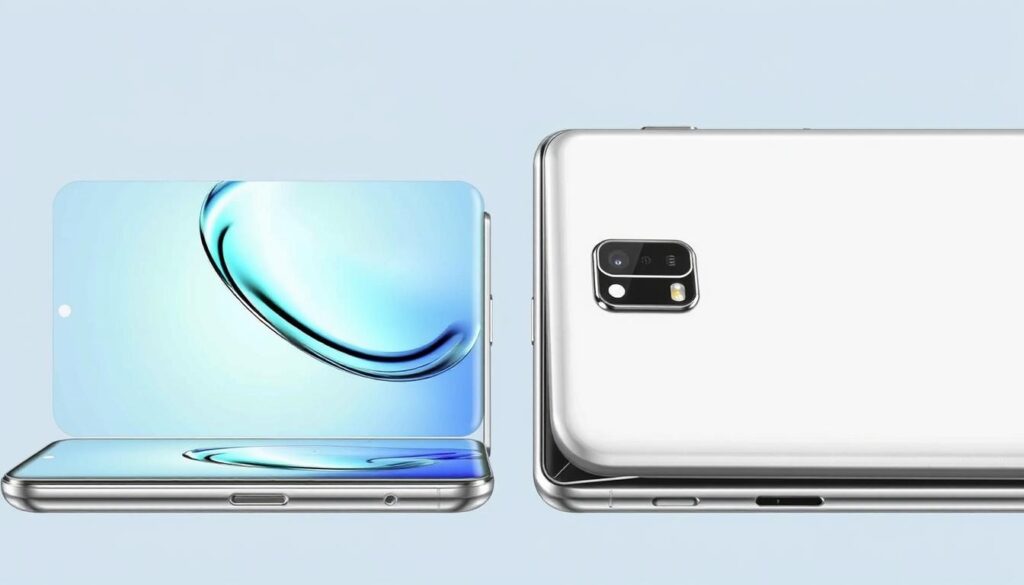
Samsung’s latest offering, the Galaxy Z Flip6, brings significant upgrades, particularly in its camera department. This device is making a statement in the flip phone market with its enhanced camera capabilities and sleek design.
Design and Durability
The Galaxy Z Flip6 boasts a durable construction that addresses concerns about longevity. Samsung’s refined hinge mechanism has demonstrated exceptional reliability during testing. The phone’s compact form factor when folded makes it a stylish and practical choice.
Camera System Upgrades
The camera system on the Galaxy Z Flip6 has seen a significant upgrade with a new 50MP main sensor, a substantial improvement over the 12MP camera in previous models. This upgrade enables brighter visuals and the ability to simulate a 2x zoom, enhancing the overall camera experience.
The camera excels particularly in low-light photography, an area where foldable phones have traditionally lagged behind conventional smartphones. It delivers bright, detailed images even in challenging lighting conditions.
Cover Display Functionality
The 3.4-inch cover display on the Galaxy Z Flip6 offers highly optimized functionality through Samsung’s refined software. Users can interact with notifications, take selfies, and control key functions without opening the device, enhancing the user experience.
Performance and Battery Life
Powered by the Snapdragon 8 Gen 3 processor and featuring Galaxy AI capabilities, the Z Flip6 delivers flagship-level performance in a compact form factor. The battery life is sufficient for daily use, though it comes at a $100 premium over its predecessor.
Motorola Razr Plus 2024: Best Flip-Style Experience
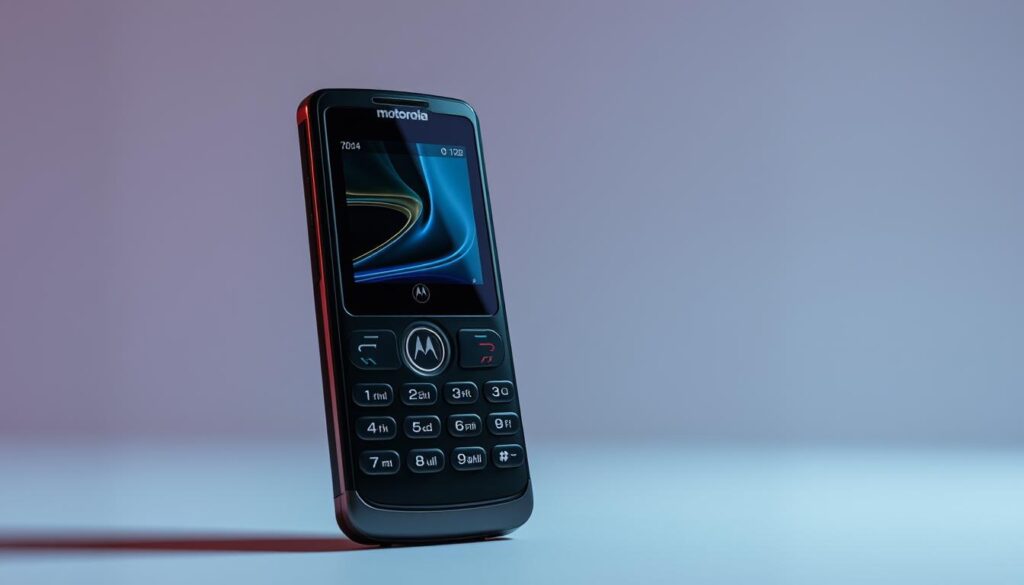
Motorola’s latest flip phone, the Razr Plus 2024, stands out with its innovative design and feature-rich cover display. This device is not just a stylish accessory but a functional powerhouse that redefines the flip phone experience.
Larger Cover Display Advantages
The Motorola Razr Plus 2024 boasts a 4-inch cover display with a high resolution of 1272 x 1080, offering substantially more screen real estate than its competitors. This larger external screen supports full app functionality, allowing users to respond to messages, browse social media, or control media playback without needing to open the device. The ability to customize the cover display with various layouts and even mimic the iPhone’s StandBy Mode when in a tent position adds to its versatility.
Design and Build Quality
The design philosophy of the Motorola Razr Plus 2024 emphasizes style and customization. The device folds into a compact square, but it’s the outer screen that truly sets it apart. With a focus on premium materials and a sleek aesthetic, the Razr Plus 2024 is both durable and visually appealing. The personalization options available for the cover display allow users to tailor their device to their personal style.
Camera Capabilities
The camera system on the Motorola Razr Plus 2024 is designed with versatility in mind, featuring a 50MP main camera paired with a 50MP telephoto lens that offers 2x optical zoom. This setup prioritizes portrait photography and close-up shots, making it ideal for capturing high-quality images without the need for ultra-wide perspectives.
Battery Life and Charging
With a 4,000mAh battery, the Motorola Razr Plus 2024 matches the expectations for its category. However, it’s the fast charging capabilities that truly distinguish this device, mitigating concerns about battery anxiety and ensuring that users can quickly get back to using their phone.
Budget and International Options
Budget and international foldable phones are changing the mobile landscape. The foldable market is diversifying, offering consumers more choices beyond premium flagship devices.
Motorola Razr 2024: Best Value Foldable
The Motorola Razr 2024 stands out as a best value proposition in the foldable phone market. With a starting price of $699, it offers a substantially improved 3.6-inch outer display and solid overall performance. This makes it significantly more affordable than premium flip phones while maintaining essential functionality.

Oppo Find N5 and Nubia Flip 5G
International markets feature compelling options like the Oppo Find N5, which boasts an ultra-thin profile and expansive displays, although it’s not widely available in North America. The Nubia Flip 5G, on the other hand, is the least expensive foldable phone to date, priced at $499. It offers an attractive flip phone-style design and fast charging capabilities, making it an entry point into the foldable technology space.
These budget and international options highlight the growing diversity in the foldable phone market, making foldable technology more accessible across different price segments.
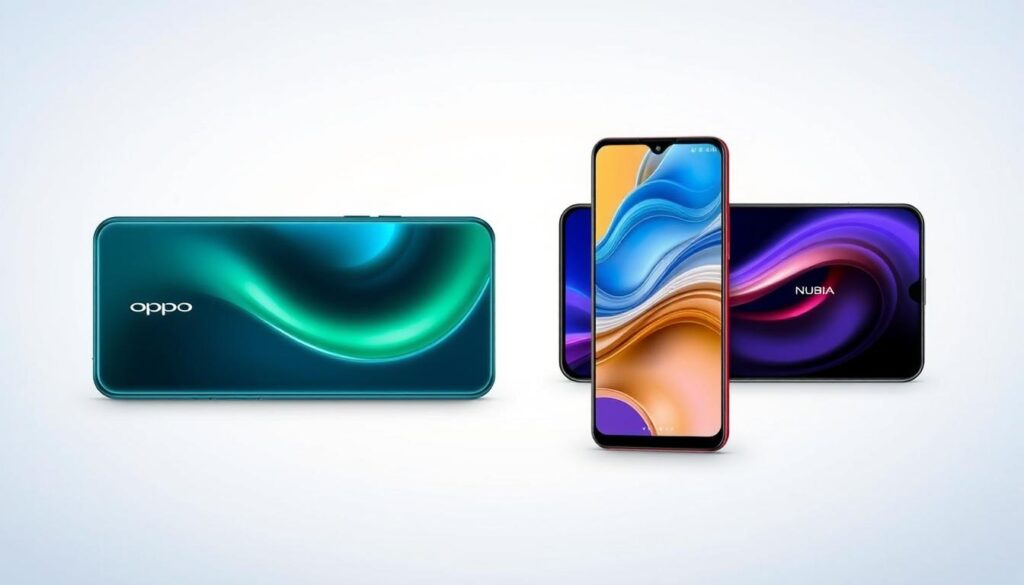
Design Innovations in Foldable Phones
Design innovation in the realm of foldable phones has reached new heights. The relentless pursuit of perfection has led manufacturers to focus on creating devices that are not only technologically advanced but also aesthetically pleasing and user-friendly.
Slimmer Profiles and Seamless Hinges
Foldable phones are getting thinner every year, making them easier to carry and use. The hinges, a crucial component of foldable phones, have evolved significantly. They are now smoother, allowing for a more refined user experience during the folding and unfolding process.
Key advancements include:
- Progressively slimmer profiles, with devices like the Oppo Find N5 measuring just 4.21mm when unfolded.
- Sophisticated hinge mechanisms that minimize visible gaps and reduce dust intrusion.
These innovations have made foldable phones more practical for everyday use, offering users the benefits of a large screen without the bulk.
Premium Materials: Titanium, Ceramic, and Eco-Friendly Options
Luxury foldable phones now incorporate premium materials that enhance their durability and aesthetic appeal. Titanium frames offer superior strength-to-weight ratios, allowing for thinner designs without compromising structural integrity.
| Material | Characteristics | Benefits |
|---|---|---|
| Titanium | Lightweight, strong | Ideal for thin designs, enhances durability |
| Ceramic | Luxurious feel, scratch-resistant | Adds premium aesthetic, improves heat dissipation |
| Eco-Friendly Materials | Sustainable, recyclable | Reduces environmental impact, appeals to eco-conscious consumers |
By incorporating these premium and eco-friendly materials, manufacturers are not only enhancing the user experience but also contributing to a more sustainable future.
Enhanced User Experiences on Foldable Devices
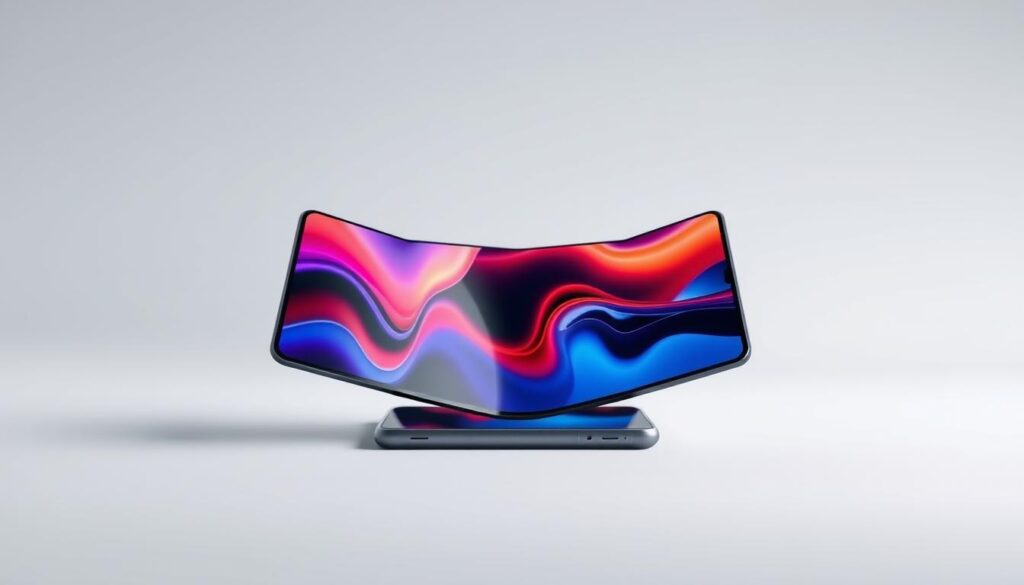
Foldable phones are at the forefront of innovation, providing users with new ways to utilize their devices. These devices are transforming the mobile landscape by offering bigger screen real estate that can be easily folded and carried. The larger screens enable users to multitask more effectively, watch content on a bigger display, and enjoy a more immersive experience.
Multitasking Capabilities
One of the significant advantages of foldable phones is their ability to support advanced multitasking capabilities. With the larger screen, users can run multiple apps simultaneously without compromising on visibility or functionality. Operating systems have evolved to support this feature, with interfaces like Samsung’s Flex Mode and Google’s optimized Android implementations that adapt content presentation based on the device’s folded state.
App developers are also optimizing their software for foldable phone form factors, creating experiences that take full advantage of the larger canvas for creative applications, productivity tools, and media consumption. This has led to new use cases and behavior patterns among users, who report spending more time on content creation, document editing, and multi-app workflows.
Combining Phone and Tablet Features
The convergence of phone and tablet functionality in foldable phones creates a versatile computing experience. When folded, these devices function as compact communication tools, while unfolding them transforms them into immersive content consumption or productivity tools. This versatility makes foldable devices highly appealing to users who need a device that can adapt to different contexts.
Users can enjoy the benefits of both phones and tablets in one device, making it ideal for various tasks such as watching movies, editing files, or chatting with friends. The bigger screen makes everything look better, and the ability to use multiple apps at once enhances productivity.
Challenges and Considerations for Foldable Phones
Despite the excitement around foldable phones, there are significant challenges to overcome. As these devices become more mainstream, issues related to their durability, longevity, and pricing become more pronounced.
Durability and Longevity Concerns
The durability of foldable phones is a primary concern for potential buyers. Manufacturers typically test their devices for approximately 200,000 fold cycles, equivalent to over 100 folds daily for five years. However, real-world durability can vary based on usage patterns and handling practices. Users are advised to handle their foldable phones gently to ensure longevity, avoiding excessive pressure on the screen and following the manufacturer’s care tips.
Price Points and Accessibility
The price premium for foldable technology is another significant consideration. Flagship foldable devices command $1,500-$2,000 price points, positioning them as luxury items. This premium pricing reflects the complex manufacturing process, including display production and hinge engineering. While the market is gradually addressing these challenges through improvements in materials science and manufacturing efficiencies, foldable phones remain expensive. As such, consumers need to plan their purchase wisely, weighing the benefits of the innovative technology against the cost.
As the technology continues to evolve, we can expect to see more affordable options emerge, making foldable phones more accessible to a wider audience. For now, the unique features and design of these devices make them worthwhile investments for many consumers.
The Future of Foldable Smartphones

The next generation of foldable smartphones promises to transform the mobile landscape. As manufacturers continue to innovate, we can expect significant advancements in display technology, device durability, and user experience.
Emerging Technologies: Rollable and Stretchable Screens
Companies like Visionox, Sharp, and Royole are pioneering rollable and stretchable display technologies. For instance, Visionox showcased a rollable OLED screen prototype in 2019, while Sharp developed foldable OLED screens capable of folding 300,000 times safely. These innovations could lead to more versatile form factors and use cases for foldable phones.
Key benefits of rollable and stretchable screens include:
- Larger displays that are still portable
- New form factors that enhance user experience
- Potential for increased device durability
Market Growth Predictions
The foldable smartphone market is expected to experience substantial growth. Predictions indicate that the market will expand from approximately $24 billion in 2023 to nearly $80 billion by 2030, representing a compound annual growth rate of about 18%. This growth will be driven by advancements in technology and increasing consumer demand.
Integration with AI, AR, and 6G
The future of foldable smartphones will be shaped by integration with emerging technologies like artificial intelligence (AI), augmented reality (AR), and 6G connectivity. AI will optimize device performance and user experiences based on folding states and usage patterns. AR applications will benefit from larger, foldable displays, creating more immersive experiences. Meanwhile, 6G connectivity will enable new use cases that leverage both the form factor and unprecedented data speeds.
These integrations will result in:
- Enhanced device performance and user experience
- More immersive AR experiences
- New use cases enabled by 6G connectivity
Conclusion
The evolution of foldable phones represents a fundamental transformation in how we experience mobile technology. These devices have evolved from experimental concepts to refined, practical phones that are increasingly influencing the broader smartphone market.
With diverse options across form factors and price points, from premium book-style devices to accessible flip-style phones, the current landscape is rich with choice. As tech continues to advance, we can expect foldable phones to become even more mainstream, setting new standards for portability and versatility in the world of mobile devices.

